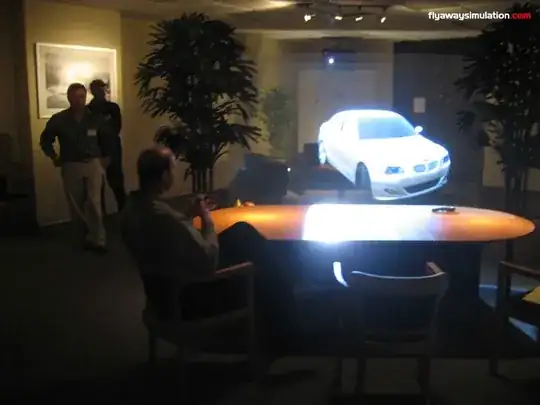The car in the picture seems to be projected with the projector in the top (2D projection). A similar 3D static car image could be accomplished with a cylindrical hologram. Any hologram can be illuminated in an appropriate way ("the correct light") to build a real image besides a virtual one.
Then, if you put a screen inside it, you are going to see a low contrast (due to light converging in other planes) picture (a view) of the 3D holographed object. The point or difference with lens imaging, like the one due to a standard projector, is that this allows to project in many planes (one at each time, or at the same time with dust/fog), as there is 3D information.
If you use dust you may project a 3D image, also low contrast, because your 3D distribution of point-like sources of light has a background due to light focusing in other points and that pass through. You'll also see your object is transparent, as you are watching light coming from every point.
In 2D lens image projections, light focusing in other planes produce blur (points become discs).
